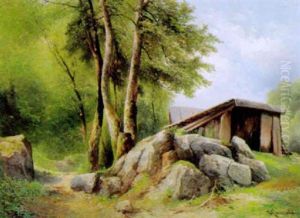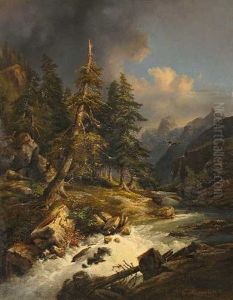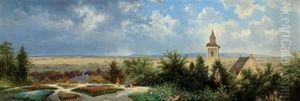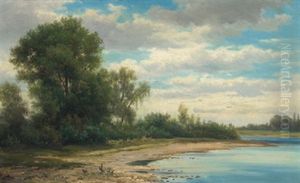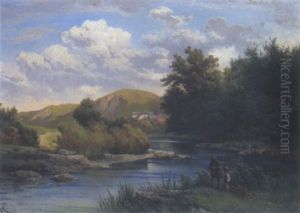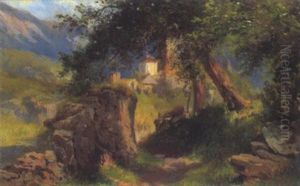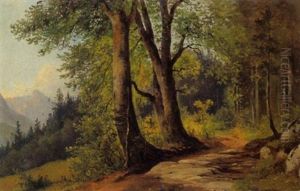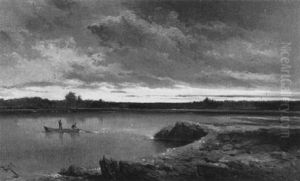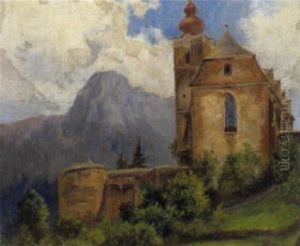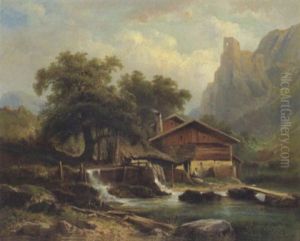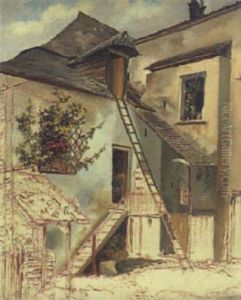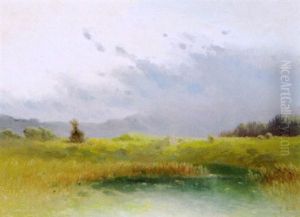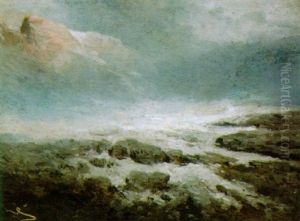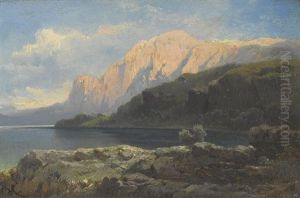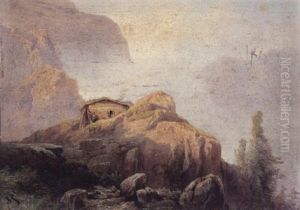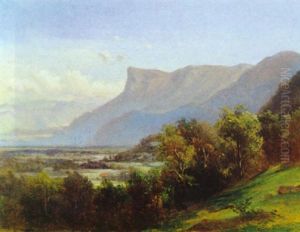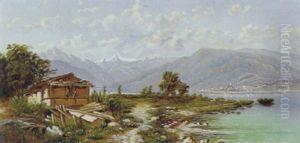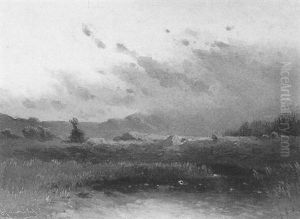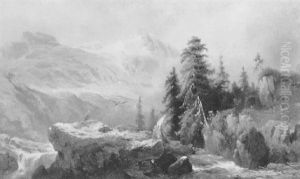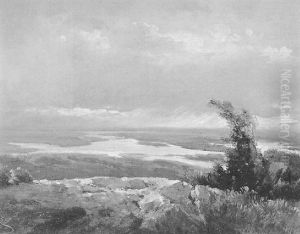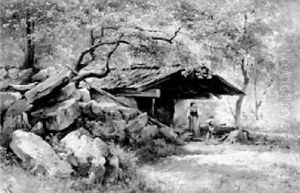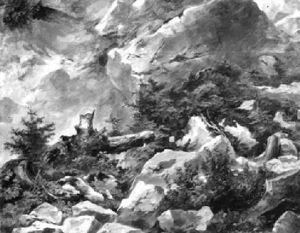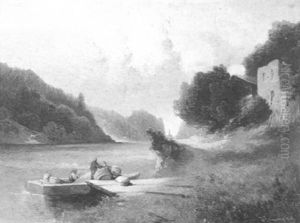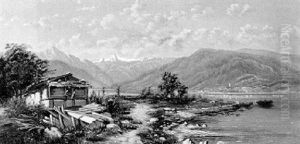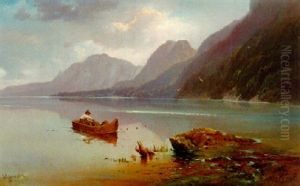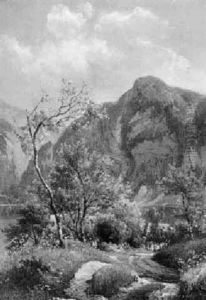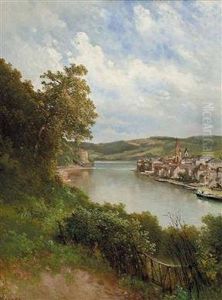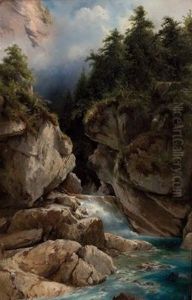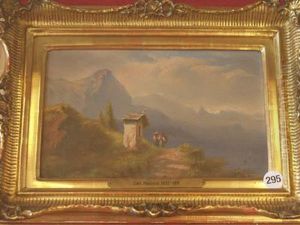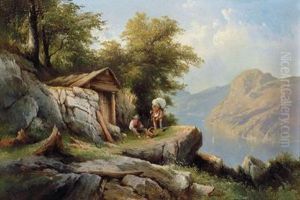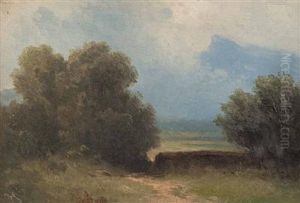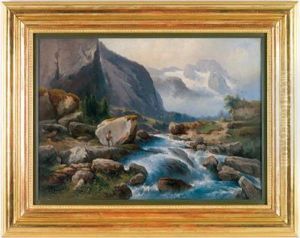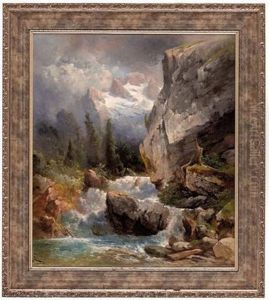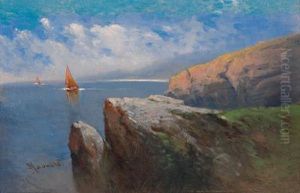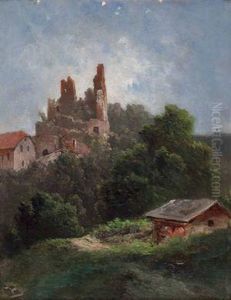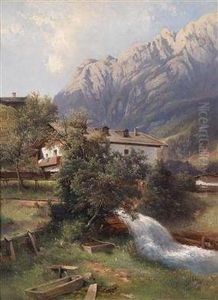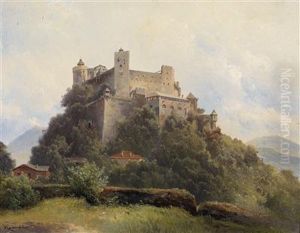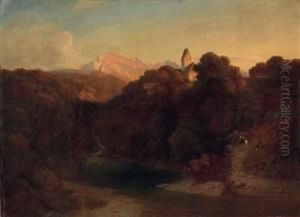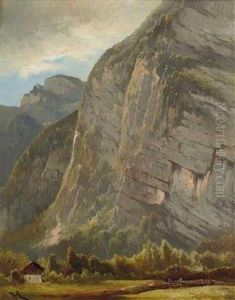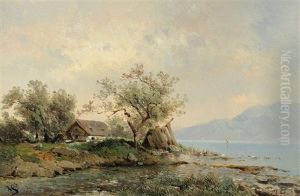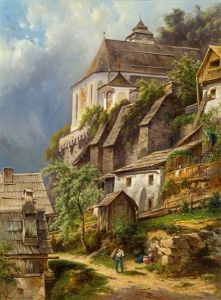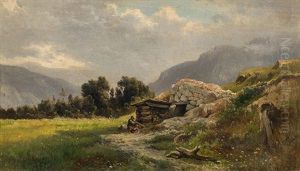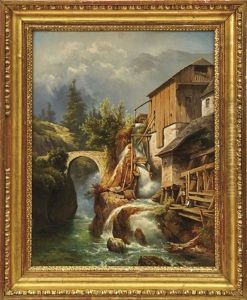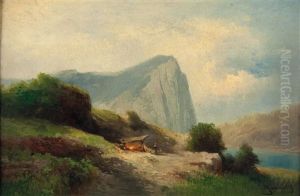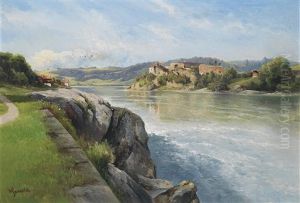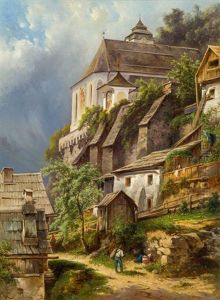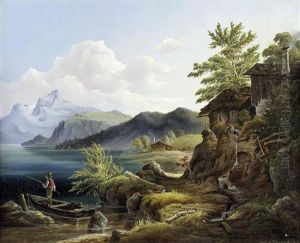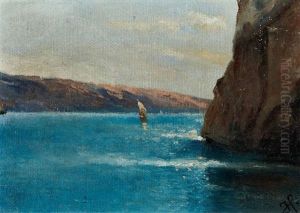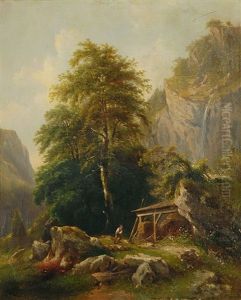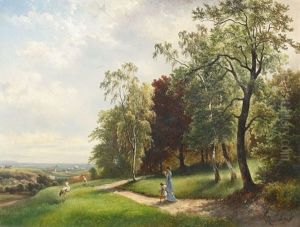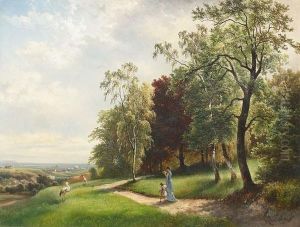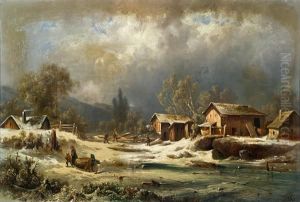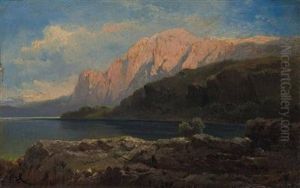Carl Haunold Paintings
Carl Haunold was a notable Austrian painter, born in 1828, primarily recognized for his captivating landscape paintings. Throughout his life, Haunold developed a profound connection with nature, which significantly influenced his artistic direction. His works are characterized by meticulous attention to detail and a deep appreciation for the natural beauty of the Austrian countryside.
Haunold's early life was marked by his passion for art, which led him to pursue formal education in the field. He studied at the Academy of Fine Arts Vienna, where he honed his skills and deepened his understanding of artistic techniques and theory. This period was crucial in shaping his future career, as it exposed him to various styles and methodologies, eventually guiding him towards landscape painting.
Throughout his career, Carl Haunold became known for his ability to capture the essence of the landscapes he painted. His works often depicted serene scenes of rural Austria, showcasing the tranquility and untouched beauty of the region. Haunold's paintings are distinguished by their realistic portrayal of natural elements, from the texture of the foliage to the changing colors of the sky. This realism, combined with a sense of romanticism, made his paintings highly sought after during his lifetime and continues to be appreciated by art enthusiasts today.
In addition to his landscape paintings, Haunold also contributed to the cultural scene by participating in various art exhibitions and becoming a member of art associations. These platforms allowed him to share his vision with a broader audience and to engage with other artists, fostering a vibrant artistic community.
Carl Haunold's legacy is preserved through his contributions to Austrian art, particularly in the realm of landscape painting. His dedication to capturing the natural beauty of his homeland has left a lasting impact on the art world, inspiring future generations of artists to explore and appreciate the landscapes around them. Haunold passed away in 1919, but his work continues to be celebrated for its beauty, technical skill, and emotional depth.
